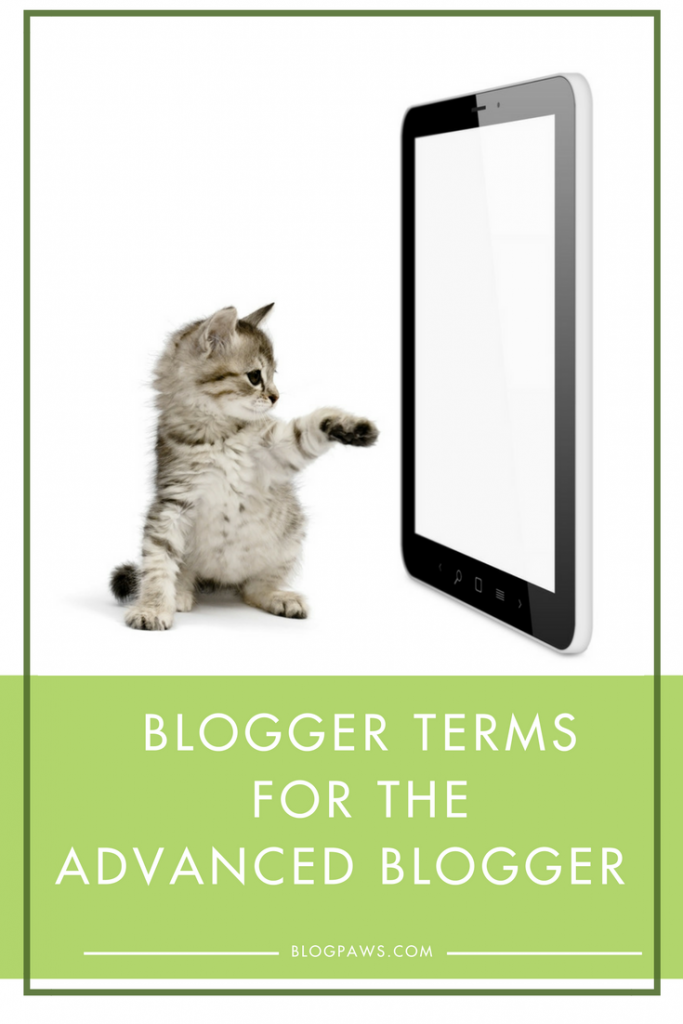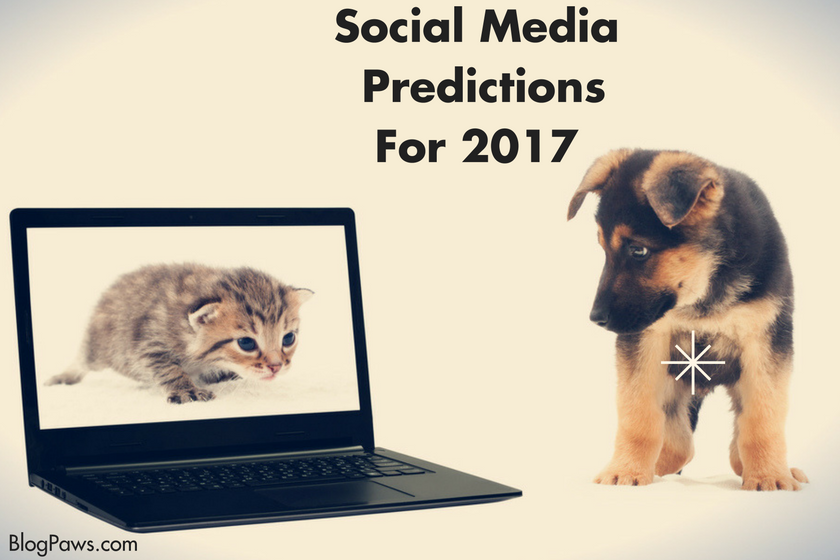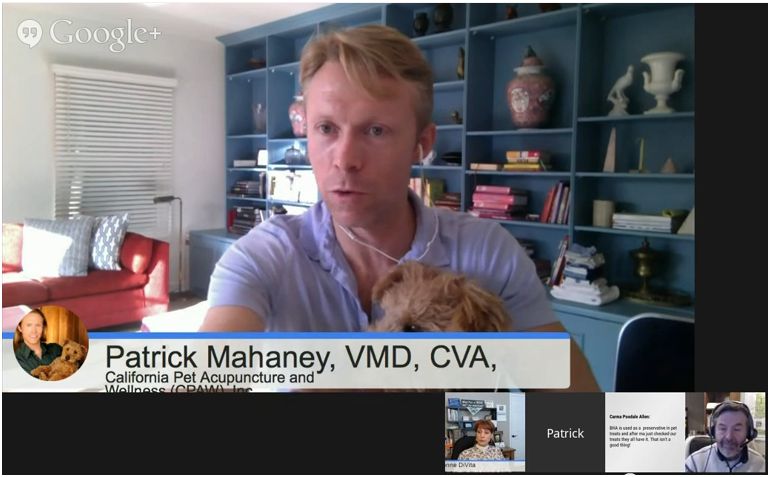Blogger Terminology for the Advanced Blogger
Earlier this year, we kicked off with a basic blogger terminology guide. Let’s take things to the next level and go from 101 terminology on up to the 201 side of things.
Do you know what every single one of these terms mean? If you blog, you should, especially if you’ve been blogging for any significant period of time. Here’s the list and then follow along and see how many you truly know.
A/B Testing: Sometimes referred to as split testing, A/B testing consists of the blogger testing an ad, piece of content, or even a sales page with different variations to see which one visitors respond to best.
Anchor Text: Contrary to popular belief, anchor text refers to the clickable text in a hyperlink. It is NOT the text that appears at the start of a post nor is it the text that holds the whole post together. When someone clicks on anchor text, you want that text to properly direct said reader to the promised location.
Example:
This affordable cat litter is a favorite in our household. (CORRECT USAGE OF ANCHOR TEXT)
For cat litter info click here. (INCORRECT USAGE OF ANCHOR TEXT)
NINJA TIP: Ask yourself what someone would search on in order to find their answer. Does anyone search on the term “click here” and expect to find the desired result? Nope! Someone would, however, be inclined to type affordable cat litter into a search engine. Anchor text away!
Captcha: You know those funky letter and/or number codes that appear in the comment section of blogs wherein you, the commenter, must type those letters in order for your comment to be validated? Yes, that is captcha. Do you know what CAPTCHA stands for? Completely Automated Public Turing test to tell Computers and Humans Apart. You’re welcome.
Conversion Rate: The percentage of your blog’s visitors who “convert” to an action in making a purchase, signing up for your e-book or newsletter, or whatever directive you have in place.
CPC vs. CPM: These two terms are similar but different. The CPC of a blog is the cost per click, of the amount you earn each time a visitor to your blog click on an ad.
CPM is cost per mille, or the amount you earn when an advertisement is displayed at least 1,000 times on your blog. Example: If a website publisher charges $2.00CPM, that means an advertiser must pay $2.00 for every 1,000 impressions of its ad. The “M” in CPM represents the Roman numeral for 1,000 (source: Investopedia.com)
Evergreen Content: This is a term that is timeless, yet in recent discussions we’ve seen a number of bloggers who do not know the true meaning of evergreen content. This is a type of content that will as relevant years from now as it is the day it is written. Examples:
- 10 Ways to Train Your Puppy to Pee Outside
- How to Get Your Cat Comfortable With the Veterinarian
- Do’s and Dont’s for First Time Fish Owners
Favicon: The icon that appears in browser tabs, bookmarks, and in commenting, generally associated or adapted from a website’s logo or purpose. Example:
See that pawprint? That’s the blog’s favicon, which was custom designed.
Gravatar: This is a graphic image or picture that represents a user online. If you’ve ever commented on a blog and saw an image appear next to your name, one of two things happened: You either set the gravatar to appear that way or the blog’s owner has the gravatar images randomly generated for commenters without one. See Gravatar.com for more details.
Influencer Marketing: Influencer marketing identifies key individuals who hold sway over a specific target consumer. These individuals are opinion leaders who help create awareness and drive to purchase a specific product or service through the unique story that the influencer shares about their experience. Influencers are advocates for brands they believe in. Unlike traditional marketing that disrupts a conversation, influencers create conversations.
Learn more about Influencer Marketing
Long tail keywords: A keyword phrase that consists of 3 to 5 words.
No-Follow Code: “When you share sponsored content your readers can see and understand the words ‘this is sponsored content.’ When it comes to the bots that Google and other sites send out to check out your blog, they cannot read those words but they can read and understand HTML code,” said Felissa Elfenbein, BlogPaws Director of Influencer Marketing.
In other words, that piece of code tells search engines: This is a paid post.
“The code rel=”nofollow” added to a link alerts the bots to the fact that they are crawling sponsored content, and that the link appears in your post because you are being paid to promote that content,” Felissa said. “Any content that you write for a brand for any sort of consideration (money, product, a chance to win, shares to their social channels, or potential sponsored content in the future) is considered sponsored content.
More about No-Follow code.
How to Do No-Follow Code:
Permalink: This is a term that gets tossed around quite frequently and many times, it is improperly used. A permalink is the unique URL for a single post on a blog. When folks want to outbound link to you, they would use the permalink to a specific post versus simply linking to your blog’s URL. Example:
Here is a permalink: https://blogpaws.com/executive-blog/the-anatomy-of-an-effective-blog-newsletter/
PNG: Portable Network Graphics. PBG does not support animation like a GIF file does. PNG does not lose quality in editing the way a JPG file does.
Our friends at Dragon Search say, “There are a few types of imaging formats: JPEG (JPG), PNG, and GIF. While JPG files are best for photography, PNG and GIF formats are used when images are edited or compressed.
- JPEG (JPG)– images formatted in a .jpg file are smaller in size, and in return load faster.
- PNG– preserves quality as an image is compressed in size.
- GIF– supports smaller sized animated images.”
Robots.txt: A type of file on your web server that indicates to search engines the parts of your blog’s content that should be ignored.
URL Shortener: URL, or uniform resource locator, is a link. By using a shortener, the URL is made shorter and still allows for a direct to the page. Examples of some URL shorteners are bit.ly and ow.ly, and tinyurl.com
WIKI: You’ve heard of Wikipedia, right: Wiki is a type of online software in which users can add and edit content. It is a collaborative, shared effort.
WYSIWYG: What You See Is What You Get. This is an acronym and refers to what you see on your post’s editor and what appears when the post is published. Simply stated, Webopedia.com defines a WYSIWYG application as “One that enables you to see on the display screen exactly what will appear when the document is printed.” (this acronym is commonly said aloud as “wizzy-wig”)
XML: Stands for extensible markup language. It is designed to transport and store data unlike HTML which is designed to display data.
Okay, what are some of the terms above that give you trouble? Did we miss any toughies that we need to add to this list? Let us know in the comments below.
Carol Bryant is the Marketing and Social Media Manager for BlogPaws and runs her own blog, Fidose of Reality and its fundraising arm, Wigglebutt Warriors. When not busy playing with her Cocker Spaniel, Dexter, she stays far away from cooking. Her trademark is her mantra and is tattooed on her arm: My Heart Beats Dog.®
Images: Kuznetsov Alexey /Shutterstock.com and robert_s/Shutterstock.com







